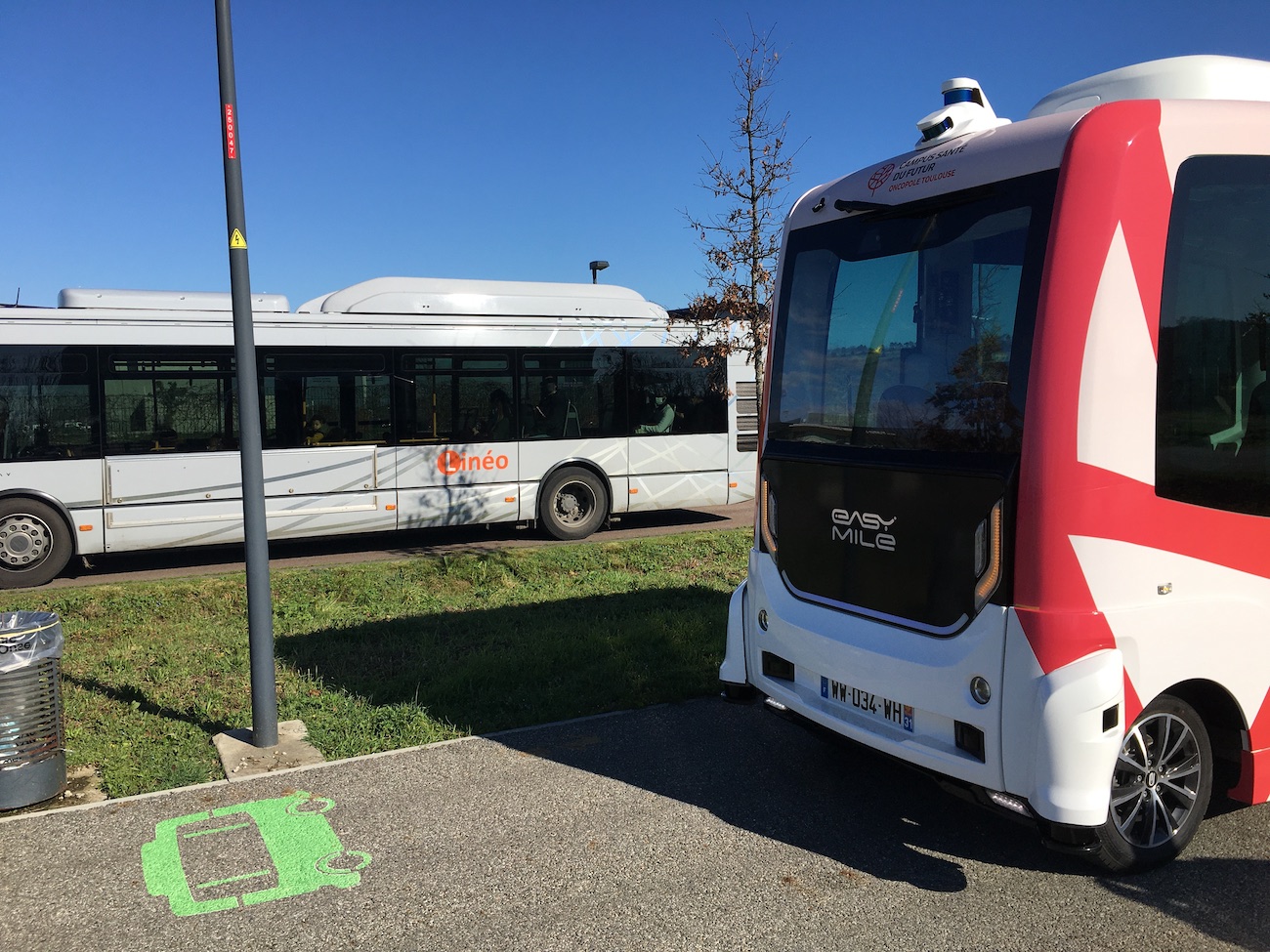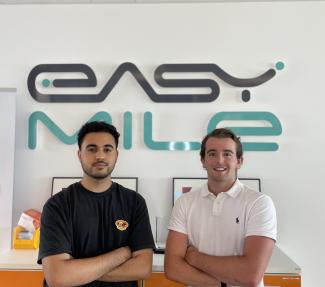What is Autonomous Mobility as a Service?
The use of autonomous vehicles as a service is known as AMaaS (Autonomous Mobility as a Service). It’s a transportation concept revolving around leveraging self-driving vehicles to provide on-demand mobility solutions. It entails the integration of autonomous vehicles into a comprehensive system that connects transportation services. AMaaS promises to answer current and future mobility struggles. Including traffic congestion, CO2 emissions, accessibility, accidents and affordability.
How autonomous vehicles are redefining the passenger journey
Autonomous vehicles are reshaping the passenger experience, offering more structured transportation through the wide advancement of technologies. They seamlessly integrate into already existing transportation networks, enhancing the overall efficiency and convenience of the transportation system.
Autonomous mobility as a service holds great potential in mitigating the problem of traffic congestion by taking into account each passenger's journey and selecting the most optimal route. By analyzing real-time traffic flows and considering factors such as departure time, desired arrival time, and other specific constraints, AMaaS platforms personalize the travel experience. This approach, coupled with advanced algorithms, allows for well planned routes, reducing bottlenecks and optimizing traffic distribution.
Real-time data processing is also vital for the vehicle's decision-making such as stopping, accelerating, or slowing down. The capabilities of autonomous vehicle systems encompass the fusion of data from multiple sensors: the timely and spatial interpretation and filtering of data, the detection and tracking of moving obstacles, and the identification and localization of potential collision hazards. To achieve this, autonomous vehicles rely on a diverse range of high-performance sensors that provide a wide field of vision and low ground clearance, enabling them to detect and avoid potential obstacles on the road.
With these advancements being available along with an array of others, zero infrastructure changes are needed to be made by the site to introduce the vehicle. The autonomous shuttle, with its advanced capabilities and technology, effortlessly shares the road with all other modes of transport.
The new commuter experience
Smart mobility systems prioritize the passenger's needs, aiming to offer a smooth and enjoyable service tailored to the demands of daily commuters. Contrary to common misconceptions, these systems are designed to be user-friendly and uncomplicated. Through digital applications, commuters can effortlessly schedule pick-ups and drop-offs with a simple touch on their phones.
Every driverless shuttle within the smart mobility system is equipped with a range of amenities, including air conditioning, USB chargers, Wi-Fi, wheelchair accessibility, and the possibility of communication with a supervisor, ensuring passenger satisfaction throughout the entire journey.
By integrating AMaaS into the public transportation system, passengers gain an alternative to using their personal vehicles. This now convenient travel option becomes part of the larger public transport network, offering a more affordable choice. Not only does this save commuters valuable time, but it also eliminates the need for private vehicle use.
As a result, public transport becomes accessible to everyone, irrespective of their personal vehicle ownership. This shift benefits individuals by providing cost-effective and comfortable transportation.
Enhancing multi-modal transportation services
Inefficient travel networks in urban areas impose significant costs on today's economies. In the European Union, it's estimated that member states lose a combined 110 billion euros annually due to ineffective transportation systems. To address this, cities must prioritize investments in multimodal transportation.
Multimodal transportation is the movement of people using multiple means of transportation within a single journey. Each transportation mode needs to be well integrated and coordinated to create an efficient and interconnected system. By adopting this approach, cities are able to cater to different transportation needs and alleviate the strain on existing networks. AMaaS enhances multi-modal transportation services, providing a solution to challenges networks face today.
A recurring problem in transportation networks today is the first/last mile problem. This problem refers to the challenge faced by commuters when traveling to or from public transport hubs. According to a study by the 2020 UN Sustainable Development Goals Report, half of the world’s urban population doesn’t have access to public transportation. As a result, individuals prefer utilizing private vehicles rather than walking to the nearest public transportation, which could be kilometers away.
Autonomous shuttles simplify the commuting experience for passengers. These vehicles bridge the gaps between passengers' homes or workplaces and major transportation stations. Passengers benefit from the convenience of transitioning between different modes of transportation using autonomous shuttles as the central hub. This streamlined experience eliminates the need for private vehicles for people’s day-to-day transportation needs, as they now have public transport available everywhere. By integrating autonomous shuttles into the transportation system, cities can enhance multi-modal transportation, make it more accessible for everyone, and sustainable for our planet.
An example of autonomous vehicles enhancing multi-modal transport and integrating into the existing network is in Toulouse, France, linking IUCT Oncopole to Paul Sabatier University.
Technology: Ready, safe, and successful
Autonomous driving systems are rigorously tested through advanced technologies to ensure that not only performance and safety standards are met, but also that the technology will know how to respond in all situations. This technology has already proved to be successful in many use cases around the world, and deemed safe, reliable and comfortable for the passengers.
Before deployment, autonomous shuttles undergo extensive testing to validate their performance and safety. This process involves simulated scenarios, closed-course trials, and real-world evaluations. Through this approach, developers ensure that the shuttles meet strict safety standards and are well-prepared to operate autonomously in complex urban environments.
One crucial component of autonomous shuttle technology is the creation of a detailed digital twin of the sites that the vehicle will be deployed in. These digital twins serve as a virtual test bench, creating a simulation where engineers can anticipate and address potential challenges that may arise in real-life scenarios. By relying on this, the vehicles and technology are able to be tested in every aspect possible, and so when deployed, they are sure to operate smoothly.
In the following image you can see the digital twin of Paul Sabatier University in Toulouse, France, where one of our autonomous shuttles is in service.
Several cities worldwide have already implemented autonomous shuttles with great success. These real-world use cases demonstrate the effectiveness of autonomous mobility solutions in addressing urban transportation challenges.
- Hamburg’s Bergedorf district offered ideal conditions to put autonomous driving through its paces. With around 36,000 inhabitants, the suburban district had a high demand for individual journeys from people’s homes to the region's suburban railway system. Already very well connected to public transport, the addition of an on-demand shuttle service helped close gaps in the first and last mile between people’s homes and the next public transport hub.
- KelRide: one of the largest public transport projects in Germany to pair autonomous and conventional vehicles. It addresses two of the biggest hurdles that autonomous driving has to overcome: operating safely in all weather conditions, and efficient and seamless integration into wider public transport networks. The project aims to clarify to what extent existing sensor technology, combined with project-specific software solutions for vehicle control and intelligent fleet management, can achieve all-weather suitability in typical Central European weather conditions.
- Bad Birnbach: EasyMile and Ioki worked closely together with the regional bus company (RBO), the district of Rottal-Inn, TÜV SÜD, and the local community to deploy the service. Today, EasyMile's autonomous shuttles operate on a fixed route, providing convenient transportation for visitors and residents in Bad Birnbach. The shuttle service has received positive feedback from users and is helping reduce traffic congestion and emissions in the town.
This blog was written by: Hamza Ouzouhou, Digital and Online Coordinator, and Victor Achard, Marketing Insights Coordinator.


